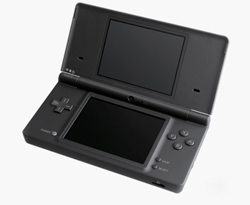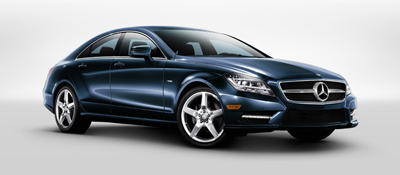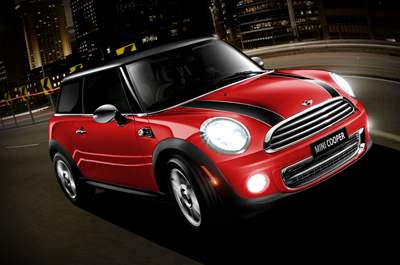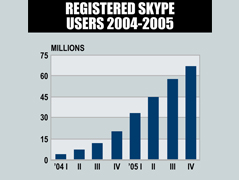Rocket-Powered: 6 Successful Product Launches
A prominent product launch has always been a marketplace tradition. When something grabs the public’s attention, it can be almost impossible to get away from it. After all, for every one hit there can be dozens and dozens of misses. So let’s look at these 6 successful product launches that were able to become that elusive hit. All of these are products that sell themselves purely through quality and word of mouth.
Apple iPad
 With over 25 million sales since April of 2010, the iPad has been a juggernaut. Apple enjoys a 73% share of the tablet market, a market that is expected to reach sales in excess of 310 million units by 2015. While most analysts expect their market share to settle down to around 50% by 2014, the numbers are nothing short of phenomenal. The initial success of the iPad wasn’t because consumers were necessarily demanding a tablet computer; it was partially because of the ground work laid with the iPhone and iPod touch. By creating a third device that used an operating system that was already familiar to their intended audience, Apple was able to leverage an existing customer relationship and turn it into a hit.
With over 25 million sales since April of 2010, the iPad has been a juggernaut. Apple enjoys a 73% share of the tablet market, a market that is expected to reach sales in excess of 310 million units by 2015. While most analysts expect their market share to settle down to around 50% by 2014, the numbers are nothing short of phenomenal. The initial success of the iPad wasn’t because consumers were necessarily demanding a tablet computer; it was partially because of the ground work laid with the iPhone and iPod touch. By creating a third device that used an operating system that was already familiar to their intended audience, Apple was able to leverage an existing customer relationship and turn it into a hit.
Nintendo DS
 Nintendo has been a giant in the video game industry since the 1980s. But with two lackluster releases in a row failing to resonate with the public (the N64 and GameCube), they were in desperate need of a sales hit. Enter the Nintentdo DS, the fastest selling game system in history. If you combine all of the different versions of the system since its release in November of 2004, it has sold a staggering 149 million copies, second only to the Sony Playstation 2.
Nintendo has been a giant in the video game industry since the 1980s. But with two lackluster releases in a row failing to resonate with the public (the N64 and GameCube), they were in desperate need of a sales hit. Enter the Nintentdo DS, the fastest selling game system in history. If you combine all of the different versions of the system since its release in November of 2004, it has sold a staggering 149 million copies, second only to the Sony Playstation 2.
By creating a system that was easy for their developers to work with, Nintendo was able push the creative limits of their games. The product also included interactive features such as dual screens, a stylus-controlled touchscreen, built-in Wi-Fi for group gaming and a built-in microphone. By taking the risk and developing a truly unique product, Nintendo was ultimately rewarded with a massive hit.
 Mercedes-Benz CLS
Mercedes-Benz CLS
Originally hitting showrooms in 2005, the design of the Mercedes-Benz CLS was polarizing to say the least. Based on the renowned E-class platform, the car mixed 4-door convenience, sexy coupe styling, and an opulent interior, all in a package that featured comfortable seating for four adults. It was truly built from its own mold.
Since its launch, the car has gone on to sell over 170,000 units, excellent for a car that starts at $71,000 and can run as high as $132,000. It’s also managed to spawn a whole new category itself – the four door coupe. Years later, other luxury car makers are only now coming out with their responses to the CLS: Audi with their A7 and BMW with the upcoming 6-Series Gran Coupe. Even non-luxury brands like Volkswagen and Hyundai are getting in on the action with the Passat CC and the Sonata, respectively.
Tickle Me Elmo
 Since it’s launch in 1996, Tickle Me Elmo has proved to be the kind of enduring sales hit that most companies only dream about. From its original version to its ten year anniversary doll, the TMX, the iconic Sesame Street doll has been a cultural phenomenon for over a decade. It’s become a descriptive term used for whatever the hot product is of the Christmas season; people even referred to the iPad as the Tickle Me Elmo of the 2010/11 shopping season. The popularity of the doll can best be attributed to cultural fads and meme-like word of mouth promotion.
Since it’s launch in 1996, Tickle Me Elmo has proved to be the kind of enduring sales hit that most companies only dream about. From its original version to its ten year anniversary doll, the TMX, the iconic Sesame Street doll has been a cultural phenomenon for over a decade. It’s become a descriptive term used for whatever the hot product is of the Christmas season; people even referred to the iPad as the Tickle Me Elmo of the 2010/11 shopping season. The popularity of the doll can best be attributed to cultural fads and meme-like word of mouth promotion.
 MINI Cooper
MINI Cooper
Traditionally, the United States has never been a friendly place for small cars. It was no surprise that when it was first introduced in the 1960’s, the Mini was hardly a hit. Fast forward to 2000, when BMW bought the brand. They announced that they would relaunch the car in the US, and rename it MINI. It still didn’t look like a hit to most enthusiasts.
In its first six years alone, MINI was able to achieve over a million sales. They played off the car’s excellent fuel economy and also used nostalgia for the brand. Additionally, they focused on young people, and targeted them as their market for the car. They also utilized product placement in movies like “The Italian Job”, that featured the car prominently in key scenes.
KFC Double Down Sandwich
 When it was released in July of 2010, the KFC Double Down was instantly looked at as a one of a kind product. Featuring two thick boneless grilled or fried chicken filets, two strips of bacon, two slices of Monterey Jack cheese and the Colonel’s Special Sauce, the sandwich was an anomaly in the market. While most fast food chains where trying to play up their health conscious offering, KFC was going in the exact opposite direction.
When it was released in July of 2010, the KFC Double Down was instantly looked at as a one of a kind product. Featuring two thick boneless grilled or fried chicken filets, two strips of bacon, two slices of Monterey Jack cheese and the Colonel’s Special Sauce, the sandwich was an anomaly in the market. While most fast food chains where trying to play up their health conscious offering, KFC was going in the exact opposite direction.
Because of the over the top nature of the product, KFC was able to garner a substantial amount of buzz. People were already talking about the product, so KFC didn’t have to spend a lot of their own money on advertising. KFC’s 2010 sales figures showed that the Double Down made up 5% of their bottom line. They sold 10 million sandwiches in the first 6 weeks the product was out. Definitely a successful launch of a truly unique new product.
Conclusion
Trying to emulate products that achieved instant success can be a daunting task, and you might not always get the results you’re hoping for. Remember that every super-product was preceded by countless duds from the same companies. Learn from your mistakes, and do your best to create a uniquely beneficial product that attracts an audience on its own merit. Perhaps one day you’ll even manage to launch the next Tickle Me Elmo.
Posted in Marketing, Product Launch Marketing
Don`t neglect your friends, share this right away.



Leave a Reply